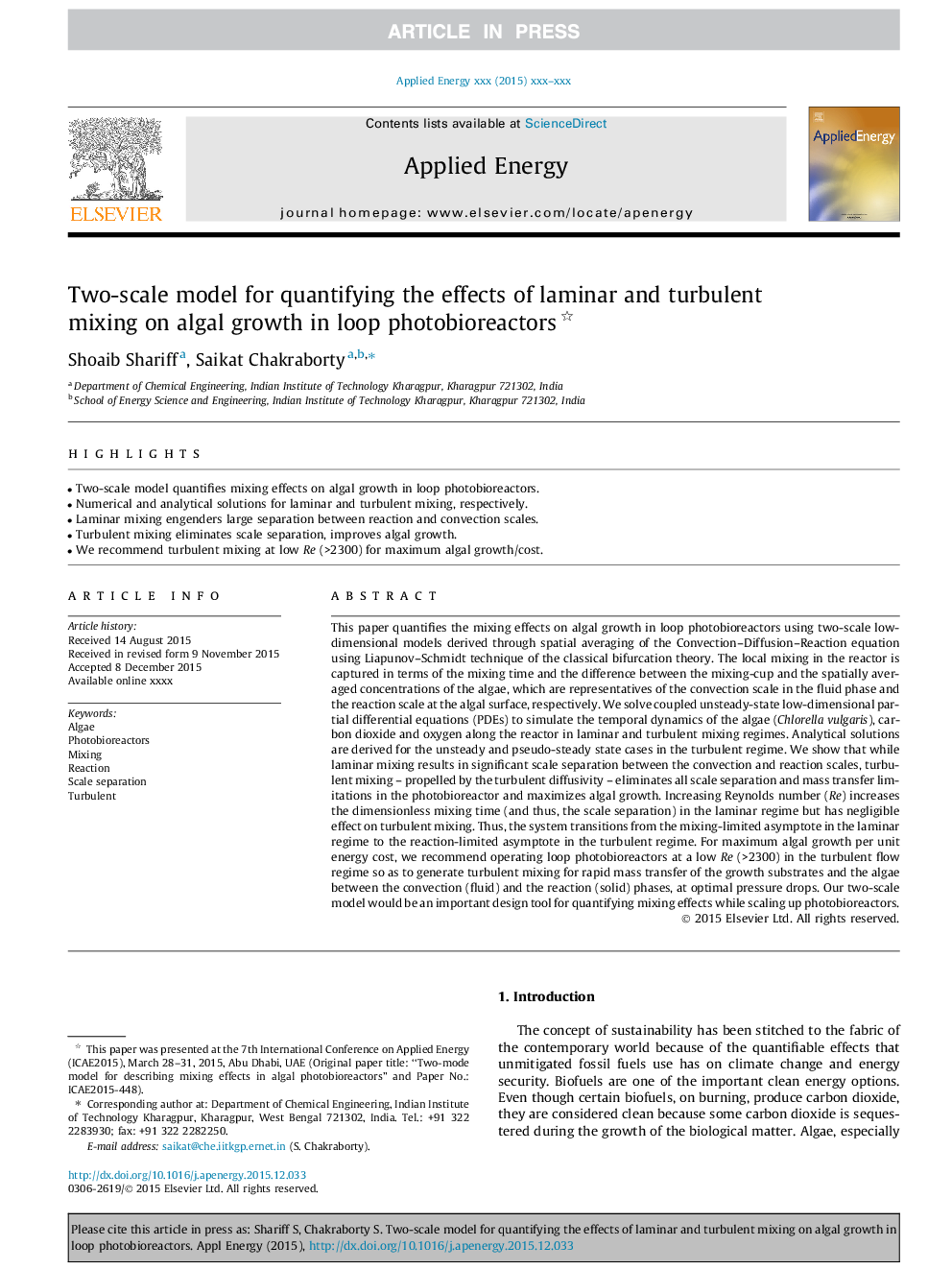| کد مقاله | کد نشریه | سال انتشار | مقاله انگلیسی | نسخه تمام متن |
|---|---|---|---|---|
| 4917034 | 1362739 | 2017 | 12 صفحه PDF | دانلود رایگان |
عنوان انگلیسی مقاله ISI
Two-scale model for quantifying the effects of laminar and turbulent mixing on algal growth in loop photobioreactors
ترجمه فارسی عنوان
مدل دو بعدی برای اندازه گیری اثرات مخلوط لمینار و آشفتگی در رشد جلبک در فتوای رآکتورهای حلقه
دانلود مقاله + سفارش ترجمه
دانلود مقاله ISI انگلیسی
رایگان برای ایرانیان
کلمات کلیدی
موضوعات مرتبط
مهندسی و علوم پایه
مهندسی انرژی
مهندسی انرژی و فناوری های برق
چکیده انگلیسی
This paper quantifies the mixing effects on algal growth in loop photobioreactors using two-scale low-dimensional models derived through spatial averaging of the Convection-Diffusion-Reaction equation using Liapunov-Schmidt technique of the classical bifurcation theory. The local mixing in the reactor is captured in terms of the mixing time and the difference between the mixing-cup and the spatially averaged concentrations of the algae, which are representatives of the convection scale in the fluid phase and the reaction scale at the algal surface, respectively. We solve coupled unsteady-state low-dimensional partial differential equations (PDEs) to simulate the temporal dynamics of the algae (Chlorella vulgaris), carbon dioxide and oxygen along the reactor in laminar and turbulent mixing regimes. Analytical solutions are derived for the unsteady and pseudo-steady state cases in the turbulent regime. We show that while laminar mixing results in significant scale separation between the convection and reaction scales, turbulent mixing - propelled by the turbulent diffusivity - eliminates all scale separation and mass transfer limitations in the photobioreactor and maximizes algal growth. Increasing Reynolds number (Re) increases the dimensionless mixing time (and thus, the scale separation) in the laminar regime but has negligible effect on turbulent mixing. Thus, the system transitions from the mixing-limited asymptote in the laminar regime to the reaction-limited asymptote in the turbulent regime. For maximum algal growth per unit energy cost, we recommend operating loop photobioreactors at a low Re (>2300) in the turbulent flow regime so as to generate turbulent mixing for rapid mass transfer of the growth substrates and the algae between the convection (fluid) and the reaction (solid) phases, at optimal pressure drops. Our two-scale model would be an important design tool for quantifying mixing effects while scaling up photobioreactors.
ناشر
Database: Elsevier - ScienceDirect (ساینس دایرکت)
Journal: Applied Energy - Volume 185, Part 2, 1 January 2017, Pages 973-984
Journal: Applied Energy - Volume 185, Part 2, 1 January 2017, Pages 973-984
نویسندگان
Shoaib Shariff, Saikat Chakraborty,
